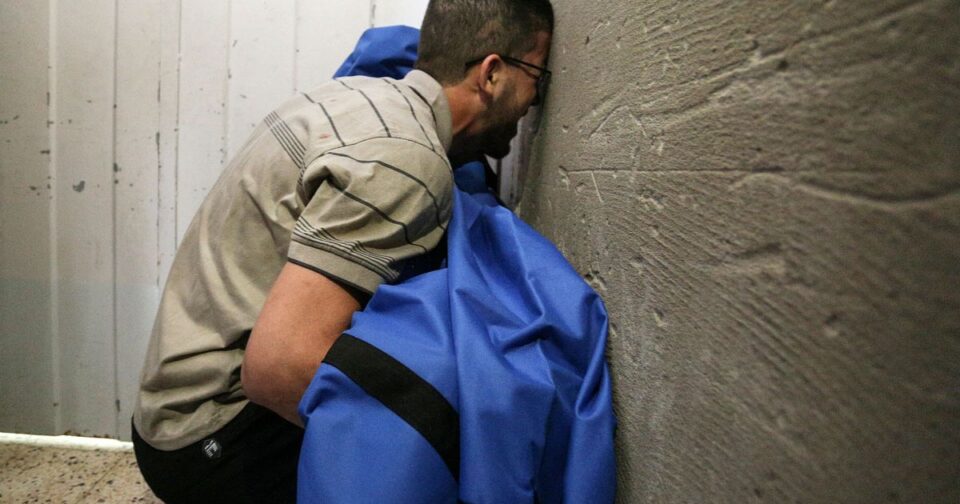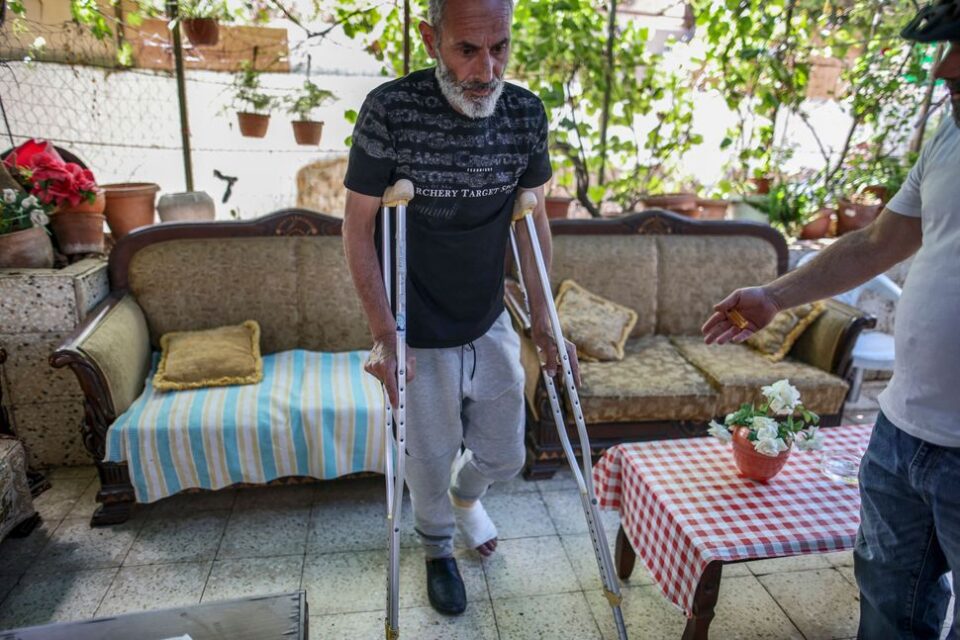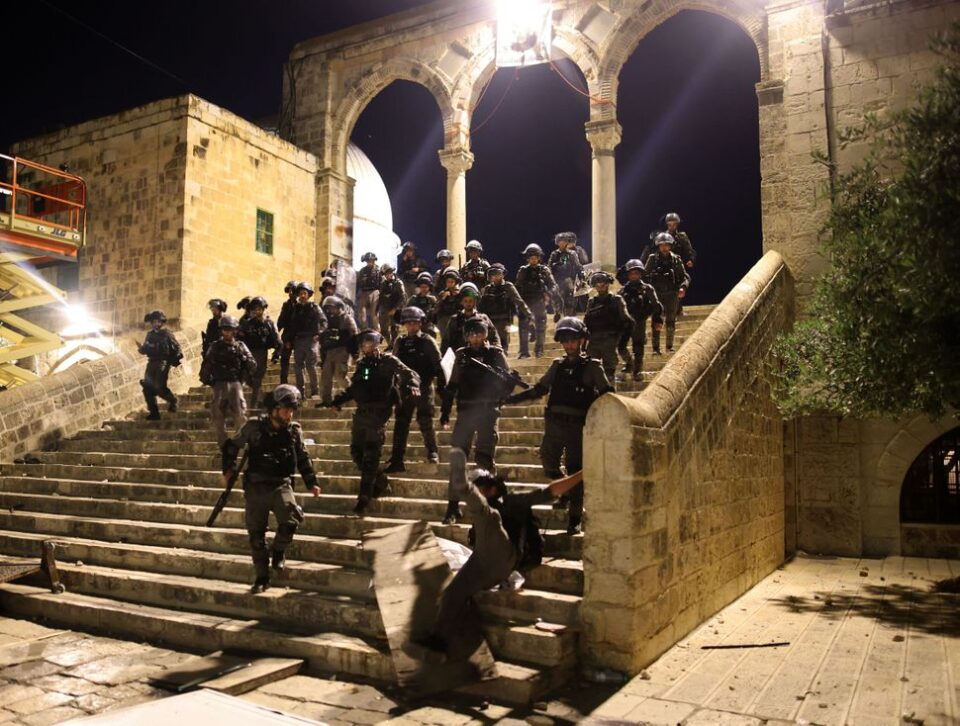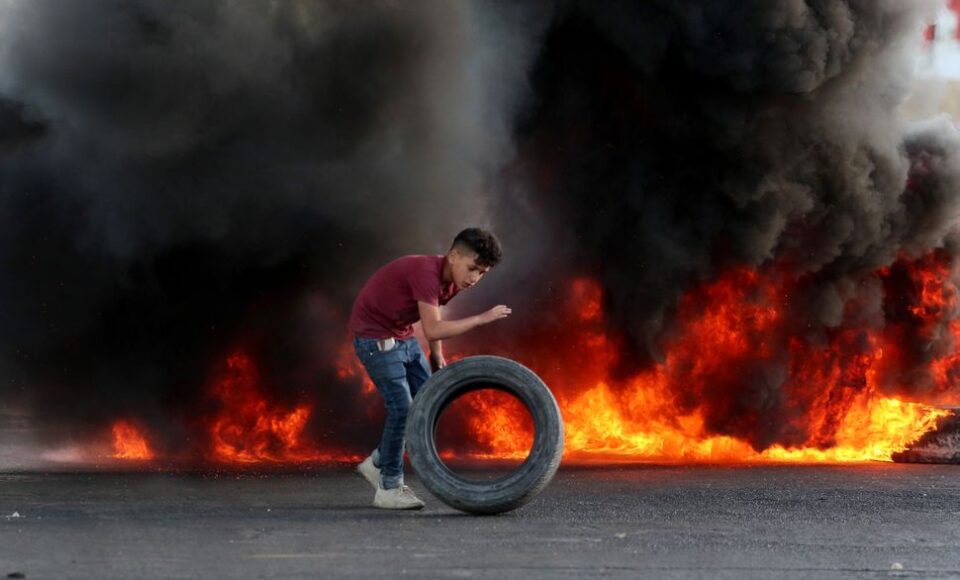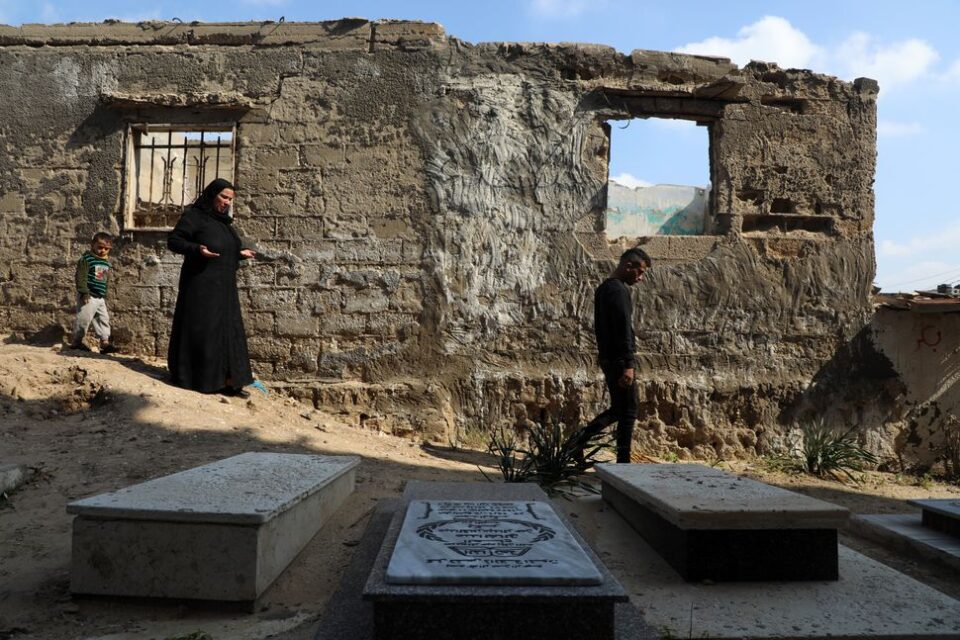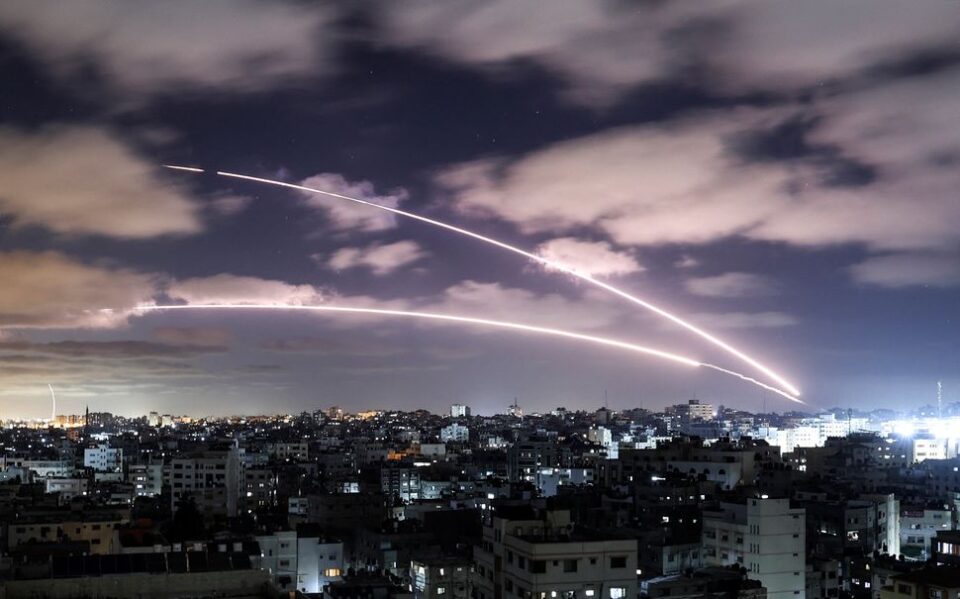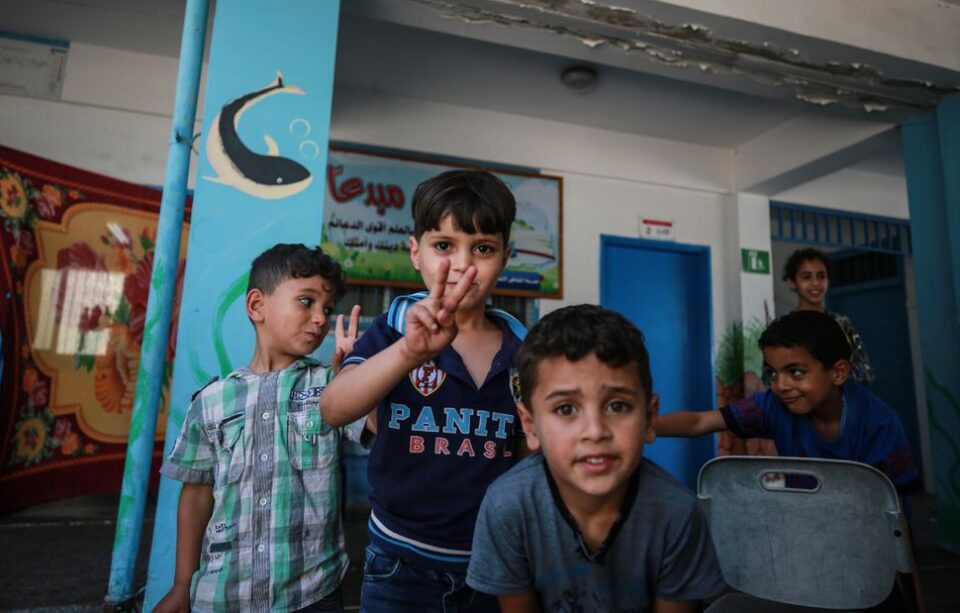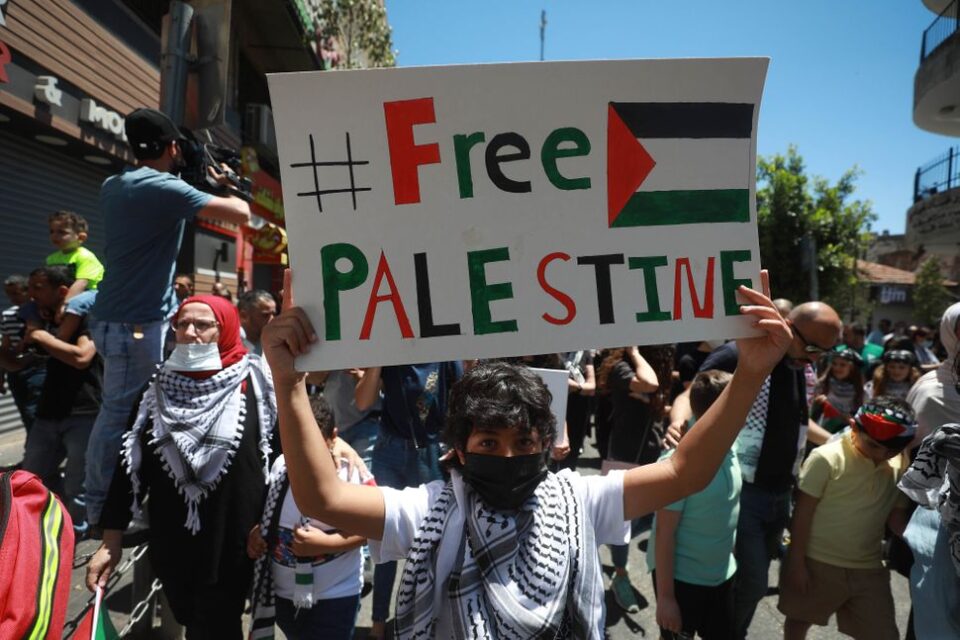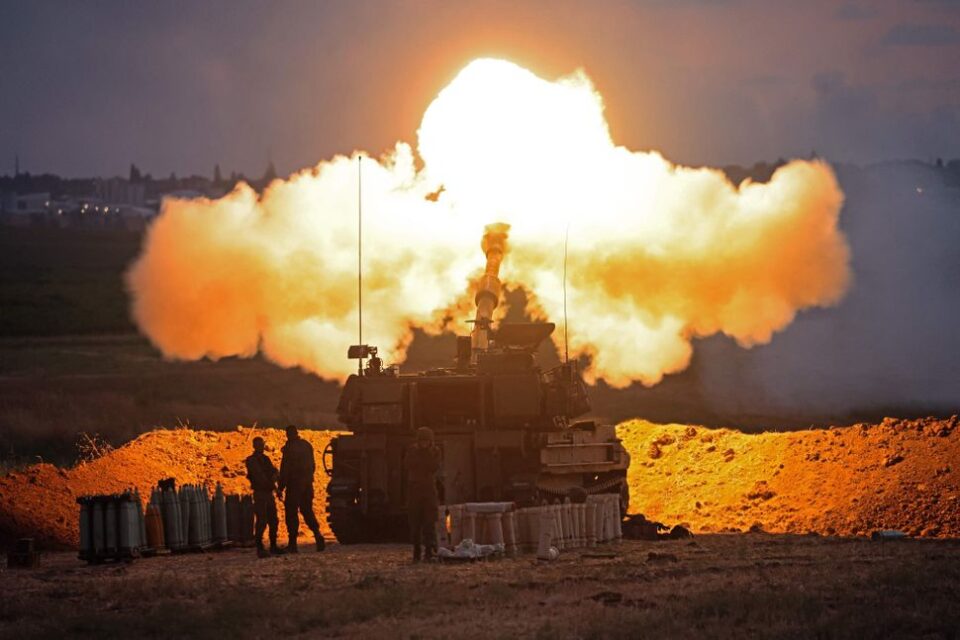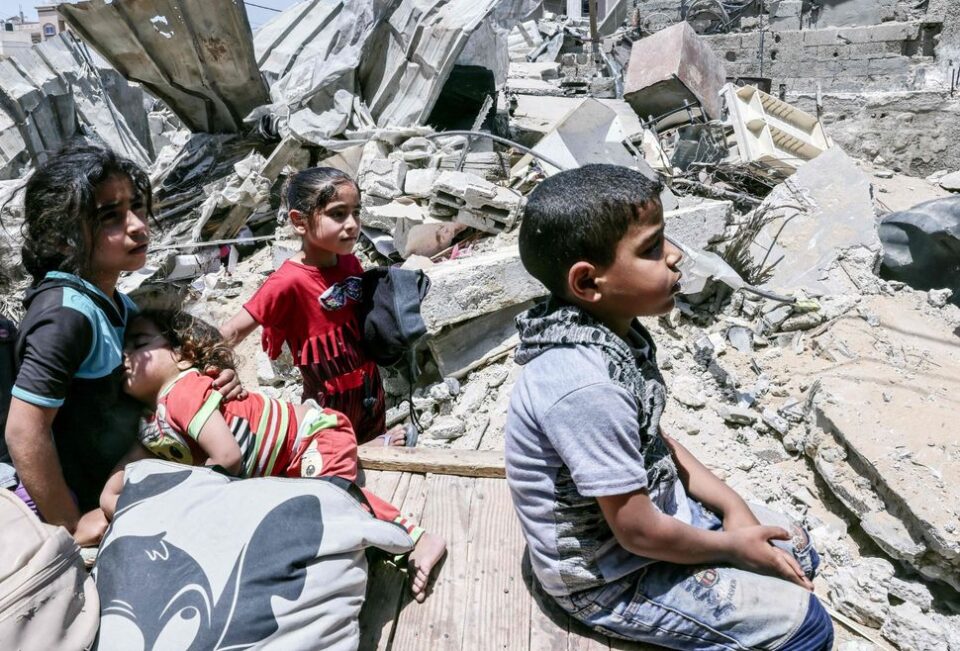Earth and blood. At the roots of the Palestinian question
Conversation with the historian Lorenzo Kamel (IAI) on the origins of the Israeli-Palestinian tragedy. “Hamas must be condemned outright, but it's not from mars”
“The strategies adopted by Hamas must be clearly and clearly condemned, but this observation must not represent an obstacle to understanding the background that led to the birth of this movement". Why the story of Hamas, the organization that controls the Gaza Strip since 2006 (year of the last elections for the Palestinians), “it is rooted in mistakes, in the suffering and scars of the Palestinian people”. When it comes to the Israeli-Palestinian tragedy, there is a high risk of being seduced by easy slogans and dividing the world into black and white. Approaching the issue from a historical point of view can help to reconstruct some context and bring to light the background that created the basis for today's violence. That's why we askedLorenzo camel, associate professor of contemporary history at the University of Turin and director of the editorial series of the Istituto Affari Internazionali (IAI), to guide us through the roots of the conflict, from the Palestinian question to the origins of Hamas. Trained at the Hebrew University of Jerusalem, at Harvard University and at Bologna University, the historian is the author of several award-winning books on the Middle East and North Africa.
Sheikh Jarrah, Pandora's box
Let's start with the spark that set off the current escalation: the expulsions of Palestinian families from Sheikh Jarrah, neighborhood of East Jerusalem. “It is an issue that has been going on for several years: i was there in the 2008 It is in the 2009 when the al-Kurd and al-Ghawi families were expelled”, Lorenzo Kamel recalls. “We are talking about nuclei composed of 30-40 people, including many children. In recent times we have witnessed the story of the al-Sabbah family, a core of 32 people that, as in the previous cases, he is very close to being expelled. This family was originally expelled from their home in Jaffa in 1948 and found refuge in this area”.
Saleh Diab, one of the Palestinian residents of Sheikh Jarrah currently undergoing eviction, walks on crutches in his house, 6 May 2021 AHMAD GHARABLI VIA GETTY IMAGES
In the dominant narrative – observes the professor – the idea passes that these families have gone to live in houses that were already present in the Sheikh Jarrah neighborhood, “But this is a misleading perception: the houses to which we refer were built from scratch, in spaces that were previously wooded areas, therefore homeless. This means that no Jews or Israelis were expelled or removed from those homes, simply because they didn't exist". These are houses built after 1948 in an undeveloped area to house refugee families who had been expelled from West Jerusalem and dozens of villages and towns in the area between the Mediterranean and the Jordan River. For them, the possibility of returning to their homes is not contemplated. “Israeli law – explains Kamel – allows Israeli Jews to reclaim property in lands evacuated in 1948, but it denies the Palestinians the right to reclaim property evacuated in the same war. For several years some organizations registered in the United States - starting with Nahalat Shimon - have been engaged in expelling these families from their homes, exploiting among other things the so-called law of absentee owners of the 1950. Some members of these same organizations have not hesitated to use counterfeit property documents as well, as they demonstratethe reports drawn up by Ir Amim, very active Israeli organization in Jerusalem.
Sheikh Jarrah is the microcosm of many elements of this conflict: opening this Pandora's box, the effects immediately spread to the wider question of Jerusalem. “Grenades were also thrown inside the al-Aqsa mosque at the end of Ramadan”, adds the teacher. By then the genie had come out of the bottle, a script already seen countless times, albeit in different forms. This helped to trigger a whole series of dynamics which, as always, pour into the final relief valve: the Gaza Strip.
Israeli security forces deploy to al-Aqsa mosque in Jerusalem on 10 May 2021
The thesis of Arab rejection as the origin of the conflict. Who rejected what?
Many observers and scholars have related the issue of Sheikh Jarrah, and more generally the beginning of the Palestinian refugee problem, to the "Arab rejection" of the partition of Palestine by the UN in 1947. “This statement may make sense, but the reality of who rejected what is much more complicated”, Kamel's argument. As Uri Avnery noted, if the Palestinians “were asked, they probably would have rejected the partition, given that – according to them – he granted a large part of their historical homeland to foreigners”. All the more so, continua Avnery, “to the Jews, which at the time represented a third of the population, was destined for 55% of the territory – and there too the Arabs constituted the 40% of the population". But from the perspective of Palestinian Arabs, which at the beginning of the last century constituted about 90% of the local population, the 1947-48 it did not mark the beginning of the struggle, but rather it coincided with the final chapter of a war that had begun in the early years of the 20th century, when some Zionist leaders adopted “denial” policies and strategies. The beginning of some of the structural causes related to the conflict can be fixed at 1907, when the Eighth Zionist Congress created a “Palestine office” in Jaffa, under the direction of Arthur Ruppin, whose main objective was – in his own words – “the creation of a closed Jewish milieu and Jewish economy, in which producers, consumers and intermediaries must all be Jews”. The very idea of "rejection" was therefore clearly present in Ruppin's approach. The goal of a "closed Jewish economy" was partially implemented by the 1904 onwards by the managers of the second and third gradesaliyot (waves of Jewish immigration to Palestine) through policies such as thekibbush ha'avoda (conquering the job) and the practice ofavodah hebrew (Jewish work, or the idea that only Jewish workers should work Jewish land). Though both were driven by the need for more job opportunities for new immigrants, they resulted in the creation of a system of exclusion that blocked from the start, primarily mentally, any potential integration with the local Arab population. “It should also be noted – highlights the teacher – that the "system of exclusion" and related social and political structures affected other fundamental issues, such as the earth and its resources”.
Some examples.
For example the Jewish National Fund (MPAs) was founded with the task of buying land in Palestine (he managed to buy nine-tenths of the land purchased in Palestine from Zionist landlords), while forbidding the sale of these newly acquired areas to non-Jews. The KKL-JNF areas were managed in a discriminatory way towards the Arab population. KKL-JNF farmers who were caught employing non-Jewish workers were subject to fines and/or expulsion. Such policies were particularly problematic, especially in view of the objectives pursued at the time, that the future first president of the State of Israel, Chaim Weizmann, outlined in a letter sent to his wife in 1907: “If our Jewish capitalists”, scrisse Weizmann, “that is, only the Zionist capitalists, should invest their capital, even only partially, in Palestine, there is no doubt that the lifeline of Palestine – the entire coastal strip – would be in Jewish hands within twenty-five years (…). The Arab retains his primitive attachment to the land, the soil instinct is strong in him, and being constantly employed in it there is a danger that it may feel indispensable, with a moral right to it". All of which confirms that the tendency to link “Arab rejection” to the rise of the Palestinian refugee problem ignores much of the story and can only foster a limited understanding of a more complex issue..
Back to the present: Gaza outlet of the impasse
Often, when the structural nodes linked to the conflict do not find a way out, Gaza rises to tragic center stage. “On the one hand we have Hamas, which always seeks to assert itself as the sole representative of the Palestinian cause, appropriating the struggle through clearly unacceptable means such as rockets fired on areas inhabited by Israeli civilians. Hamas represents an affront that few critics of the Israeli establishment would be willing to tolerate.", argues the historian. “On the other side we have Israel, which focuses almost exclusively on Hamas, leaving all the structural background in the background, including the existence of millions of human beings who have been living without any citizenship for over half a century, or rights, have no state of their own. On the one hand, it is necessary to defend the legitimate and undeniable right of the State of Israel to live and prosper in complete security", continues Lorenzo Kamel. "On the other hand, we must be willing to see and denounce the legal limbo to which millions of Palestinians have been subject for over half a century".
“Hamas does not come from Mars”
the two main contenders are Saudi Arabia and Iran, Lorenzo Kamel wrote an article on the front page of Ha'aretz that had great resonance. The title was: “Because Palestinians in Gaza support Hamas?”. The importance of asking this question is still relevant today. “When you talk about the conflict, you forget all of that – the daily violence of the occupation, which is pure terror for those who suffer it - and we focus only on Hamas, whose rise is the product of multiple aspects. Hamas operates a kind of perpetualhijacking, a hijacking of the struggle through the use of indiscriminately fired missiles at Israeli civilians: its leaders seem more interested in their own political gain than in the price paid by the local population. Israel, on the other side, behaves as if Hamas comes from Mars and forgets its role”.
From 1967 (year of the Six Day War) al 1987 (year of the founding of Hamas) mosques in the Strip have increased from 200 a 600. It is legitimate and natural to ask the reason for this. Where does all this come from? “The answer – claims the historian – is also linked to the conditions in which the Palestinians lived during those twenty years. It's good to remember, furthermore, that Hamas was born with the support of the Israeli authorities to counterbalance the secular and leftist movements that were within the Palestine Liberation Organization (Olp)”.
The population of Gaza is made up of former refugees, families expelled in 1948 from various towns who were transported by bus to the fields and cities that make up today's Strip. We are talking about a population that is already heavily tested, then forced into decades of deprivation not only for the blockade imposed in 2007, but by living in a state of complete dependence, which also includes demographic records (controlled by Israel) and the currency used (lo shekel). Two million people have a single aquifer, mostly polluted.As recalled in recent days by HuffPost, demographics in Gaza deserve a place in the narrative. The 53-54% of the population of the Strip today has less than 18 years: this means that more than half of the inhabitants in 2006, when Hamas won the elections, there was or did not have any voting rights.
The uniqueness of the Palestinian case
The historian invites us to compare the case of the Palestinians with other somewhat similar contexts (Western Sahara, Chechnya, Tibet, Abkhazia and others): “in these and other cases, it is undeniable that there are forms of oppression, but the other powers have at least accepted to take responsibility for the subject populations, granting them citizenship. Today again, on the other hand, millions of Palestinians are tried in military courts. According to official Israeli datathe 99,74% of the Palestinians who appears before these courts comes out with a conviction.
"Israel - underlines the professor - obtains a series of 'benefits' from the occupation of the Palestinian territories that go far beyond security issues". One example is the disposal of Israeli waste and waste, which systematically comeburied in the occupied Palestinian territories in ways similar to what happens in the Land of Fires. Another example is the materials that are taken from Palestinian quarries to be used in Israel: we are talking about twelve million tons of stones and gravel annually, three quarters of which used for construction built in Israel. Add to this that due to the settlements and related infrastructure around the 40% of the West Bank is not accessible by the Palestinian population. In the end, on about the 60% of the West Bank every aspect of civilian life of the local majority is subject to the exclusive control of the Israeli authorities. “Only a simplistic approach can accept such a reality in the sole name of security”.
The alleged "impotence" of the international community and the rivers of funds "misinvested" by the Palestinians
There is much talk of an alleged impotence of the international community. “Talking about the impotence of international actors provides a misleading idea. In reality these actors have a central role. Let's think about the United States: US taxpayers provide 10 millions of dollars a day to Israel that is used largely for weapons, included, according to some sources, the one that brought down the Al-Jalaa tower, which until two days ago housed the newspapers operating in Gaza. Let's think about Iran, which provides a huge amount of missiles, increasingly sophisticated, ad Hamas. But let's also think of the European countries, which supply a large part of the weapons used in Israel-Palestine, so muchin everyday life as much as during the wars we witness cyclically. These and other actors play a central role in the structural causes of the conflict.”.
Another recurring thesis is that the Palestinians receive enormous funds from the international community. There are extensive studies – like that of economist Shir Hever – according to which the 78% of the aid intended for the Palestinians ends up in Israeli coffers, although other research gives percentages with different figures. This is yet another confirmation of how much the perceptions that can be drawn from the outside can end up simplifying much more complex local dynamics.
How does it come out?
The ultimate tragedy of this conflict is the dehumanization of the other. And this involves all parties involved. Such a dead end requires programs of study to understand the scars of the “others”, – be they Israelis or Palestinians – as well as a decisive stop to arms supplies and a multilateral approach that includes concrete pressure on all actors who oppose the international consensus regarding Jerusalem and the self-determination of both peoples. There are two alternatives to such an approach. The first is represented by the nefarious unilateralism that both sides have shown on countless occasions. The second is what Martin Buber called a “monologue disguised as dialogue”, that is, a dialogue “in which two or more men gathered in one place, in a strangely convoluted and indirect way, they speak only to themselves and yet believe they are relieved of the pain of having to count only on themselves". Buber wrote these words in 1947. In 2021 appear more current than ever.
